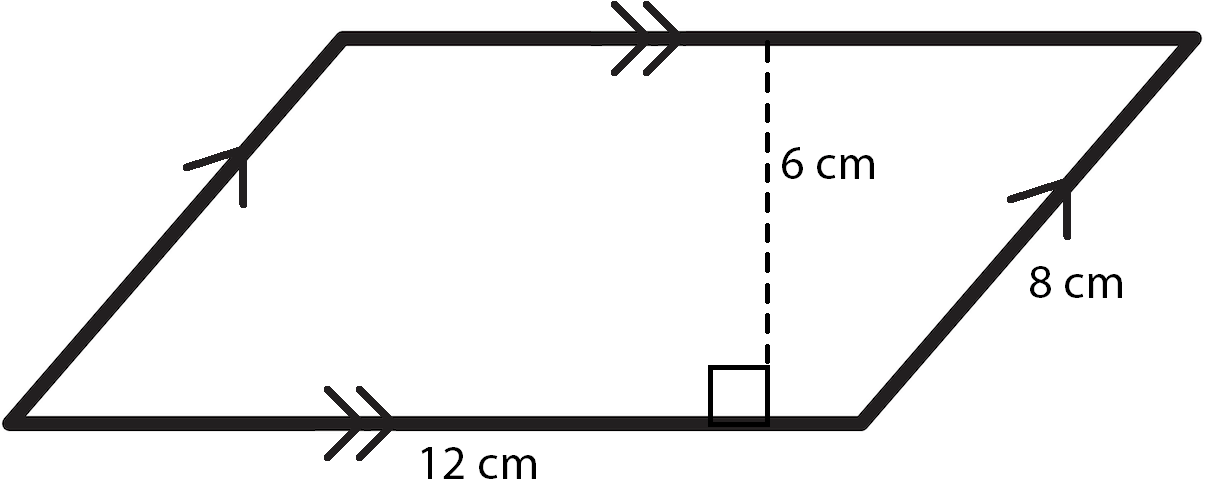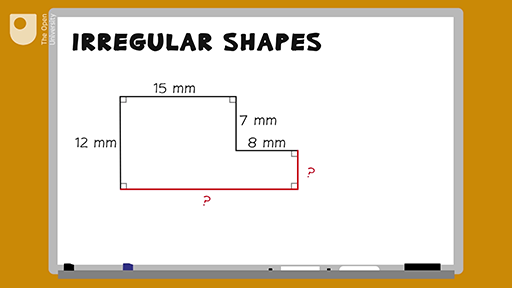Topic perimeter of an equilateral triangle: Delve into the world of geometry with our exploration of the "Perimeter of an Equilateral Triangle." This guide simplifies complex concepts, making them accessible and engaging for enthusiasts and learners alike.
Table of Content
- Basics of an Equilateral Triangle
- YOUTUBE: How to Find the Perimeter of an Equilateral Triangle
- Perimeter of an Equilateral Triangle: Definition and Formula
- Calculating the Perimeter with Given Side Length
- Relationship Between Perimeter and Other Properties
- Examples and Solved Problems
- Practical Applications and Real-World Examples
- FAQs and Common Misconceptions
- Advanced Concepts and Theorems Related to Equilateral Triangles
- Interactive Tools and Calculators
- Summary and Key Takeaways
Basics of an Equilateral Triangle
An equilateral triangle is a special type of polygon, remarkable for its equal sides and angles. It\"s a primary shape in geometry, fundamental to understanding more complex geometric concepts.
- Definition: An equilateral triangle is a triangle in which all three sides are of equal length. Consequently, each of the triangle\"s internal angles is exactly 60 degrees.
- Key Properties: In an equilateral triangle, not only are the sides equal, but the angles are also congruent. This symmetry gives the triangle unique properties, such as congruent medians, angle bisectors, perpendicular bisectors, and altitudes.
- Formulas: The perimeter of an equilateral triangle is calculated as 3 times the length of one side, represented as P = 3a. Additionally, the area can be calculated using the formula A = (√3/4) * a², where \"a\" is the length of a side.
- Real-world Applications: Equilateral triangles are found in various fields, including architecture, engineering, and art, due to their pleasing symmetry and strong structural properties.
This fundamental understanding of an equilateral triangle lays the groundwork for more advanced studies in geometry, including the exploration of its perimeter, area, and other intrinsic properties.

READ MORE:
How to Find the Perimeter of an Equilateral Triangle
Find: Discover the ultimate guide to finding hidden treasures, hidden gems, and secret spots with our expert tips and tricks. Unleash your sense of adventure and go on an exhilarating journey of exploration today!
Perimeter of an Equilateral Triangle: Definition and Formula
The perimeter of an equilateral triangle is a fundamental concept in geometry, crucial for understanding the properties of this symmetrical shape.
- Definition: The perimeter of an equilateral triangle is the total length of its three equal sides. It represents the boundary length of the triangle.
- Formula: The formula for calculating the perimeter of an equilateral triangle is straightforward, given its equal sides. It is expressed as P = 3a, where \"P\" represents the perimeter and \"a\" is the length of one side of the triangle.
- Understanding the Formula: The reason behind the formula P = 3a is that all sides of an equilateral triangle are of equal length. Therefore, by multiplying the length of one side by 3, we get the total length around the triangle.
- Practical Calculation: To calculate the perimeter, one simply needs to know the length of one side. This makes it particularly easy to work with equilateral triangles, whether in theoretical problems or real-world applications.
This section helps in understanding how the simplicity of the equilateral triangle\"s structure allows for straightforward calculations, making it a favorite topic in geometry education and practical applications.

Perimeter of an Equilateral Triangle
Perimeter: Marvel at the wonders of geometry as we dive deep into the concept of perimeter. Learn how to calculate the lengths of sides and discover the fascinating properties of shapes. Expand your knowledge and unlock the secrets of perimeter in this captivating video!
Find the Perimeter of an Equilateral Triangle with a Side of 6 cm
Equilateral Triangle: Delve into the world of symmetrical beauty as we explore the mesmerizing equilateral triangle. Discover its unique properties, create stunning designs, and uncover the magic of its harmonious proportions. Join us for an enlightening experience and embrace the elegance of the equilateral triangle!
Calculating the Perimeter with Given Side Length
Calculating the perimeter of an equilateral triangle when the length of a side is known is a straightforward process. This section provides a step-by-step guide to perform this calculation effectively.
- Identify the Length of One Side: Begin by determining the length of one side of the equilateral triangle. This can be a given value in a problem or measured in real-world scenarios.
- Apply the Perimeter Formula: Use the formula for the perimeter of an equilateral triangle, P = 3a, where \"P\" is the perimeter and \"a\" is the length of one side. This formula is derived from the fact that all three sides of an equilateral triangle are equal.
- Perform the Calculation: Multiply the length of one side by 3. For example, if one side of the triangle is 5 cm, the perimeter would be 3 x 5 cm = 15 cm.
- Understanding the Result: The result obtained is the total length around the triangle, giving a complete measure of its boundary.
This method of calculation is essential in various mathematical and practical applications, offering a simple yet effective way to determine the perimeter of an equilateral triangle.

Relationship Between Perimeter and Other Properties
The perimeter of an equilateral triangle is closely linked to its other geometric properties. Understanding these relationships enhances the comprehension of the triangle\"s overall geometry.
- Area and Perimeter: The area of an equilateral triangle can be determined if the perimeter is known. The formula for the area, A = (√3/4) * a², can be rewritten using the perimeter. Since the perimeter, P = 3a, the side length \"a\" can be expressed as P/3. Substituting this in the area formula gives a direct relationship between the area and the perimeter.
- Height and Perimeter: The height of an equilateral triangle can also be derived from its perimeter. The height (h) can be found using the formula h = (√3/2) * a. By substituting the side length \"a\" with P/3, we get a direct correlation between the height and the perimeter.
- Angles: Although the perimeter does not directly affect the angle measures in an equilateral triangle (always 60 degrees each), it is a reflection of the triangle\"s size, which proportionally affects all dimensions, including the angles\" bisectors and altitudes.
- Circumcircle and Incircle Radii: The radii of the circumcircle and incircle of an equilateral triangle can be expressed in terms of its perimeter. The circumcircle radius (R) is (a/√3), and the incircle radius (r) is (a/2√3), where \"a\" can be replaced by P/3.
These relationships show that knowing the perimeter of an equilateral triangle can provide insights into various other aspects of its geometry, making it a key element in mathematical calculations and geometrical understanding.

Examples and Solved Problems
This section provides practical examples and solved problems to illustrate the application of the perimeter formula in various scenarios involving equilateral triangles.
- Example 1:
- Problem: Find the perimeter of an equilateral triangle with a side length of 6 cm.
- Solution: Using the formula P = 3a, where \"a\" is 6 cm, the perimeter P = 3 × 6 = 18 cm.
- Result: The perimeter of the triangle is 18 cm.
- Example 2:
- Problem: If the perimeter of an equilateral triangle is 24 cm, find the length of one side.
- Solution: Rearrange the formula to a = P/3. Substituting P = 24 cm, we get a = 24/3 = 8 cm.
- Result: Each side of the triangle measures 8 cm.
- Example 3:
- Problem: An equilateral triangle has a perimeter of 30 inches. Find its area.
- Solution: First, find the side length: a = P/3 = 30/3 = 10 inches. Then, use the area formula A = (√3/4) × a² = (√3/4) × 10² = 25√3 square inches.
- Result: The area of the triangle is 25√3 square inches.
These examples demonstrate how the perimeter formula for an equilateral triangle can be used to solve various practical problems, enhancing understanding of its properties and applications.
_HOOK_
Practical Applications and Real-World Examples
The concepts of equilateral triangles, especially their perimeters, find diverse applications in the real world, ranging from architecture to art. This section explores some of these applications.
- Architectural Design: Equilateral triangles are often used in architectural designs for their aesthetic appeal and structural efficiency. The equal sides and angles make for easy calculation of dimensions, including the perimeter, which is crucial for material estimation and structural integrity.
- Engineering and Construction: In engineering, especially in truss constructions, equilateral triangles are used for their strength and stability. The perimeter measurements are critical in determining the amount of material needed and ensuring the structure can withstand various forces.
- Art and Decoration: Artists and designers frequently employ equilateral triangles in their works due to their symmetry and balance. The perimeter often helps in scaling the designs correctly.
- Education and Puzzles: In educational settings, equilateral triangles are used to teach geometric principles. Understanding the perimeter of these triangles aids students in grasping more complex geometric concepts.
- Science and Technology: In fields like optics and crystallography, the equilateral triangle\"s properties, including its perimeter, are essential for understanding molecular structures and light refraction patterns.
These examples illustrate the significance of understanding the perimeter of an equilateral triangle, showcasing its versatility and practicality in various real-world scenarios.

FAQs and Common Misconceptions
This section addresses frequently asked questions and common misconceptions regarding the perimeter of an equilateral triangle, providing clarity and accurate information.
- Is the perimeter of an equilateral triangle always a multiple of three? Yes, since the perimeter is calculated as three times the length of one side, it will always be a multiple of three.
- Can the perimeter determine the area of an equilateral triangle? Yes, knowing the perimeter allows you to find the side length, which can then be used to calculate the area using the formula A = (√3/4) * a².
- Is it possible to have an equilateral triangle with different angle measurements? No, in an equilateral triangle, all angles are always 60 degrees. This is a defining characteristic of equilateral triangles.
- Do the properties of an equilateral triangle change with size? While the size changes, the fundamental properties, such as equal sides, equal angles, and the relationship between perimeter and other elements, remain constant regardless of the triangle\"s size.
- Is the height of an equilateral triangle equal to its side length? No, the height and the side length are different. The height can be calculated using the formula h = (√3/2) * a, where \"a\" is the side length.
- Are all isosceles triangles also equilateral? No, this is a common misconception. While all equilateral triangles are isosceles (two equal sides), not all isosceles triangles are equilateral (three equal sides).
Understanding these FAQs and misconceptions helps in gaining a more comprehensive and accurate knowledge of the geometric properties of equilateral triangles.

Advanced Concepts and Theorems Related to Equilateral Triangles
Equilateral triangles are not just basic geometric shapes; they are also at the heart of several advanced mathematical concepts and theorems. This section delves into some of these intriguing aspects.
- Napoleon\"s Theorem: This theorem states that if equilateral triangles are constructed on the sides of any triangle (all pointing outward or all inward), the centers of these equilateral triangles themselves form an equilateral triangle.
- Morley\"s Theorem: Morley\"s Theorem reveals that in any triangle, the points of intersection of the adjacent angle trisectors form an equilateral triangle, known as Morley\"s Triangle.
- Viviani\"s Theorem: In an equilateral triangle, Viviani\"s Theorem states that the sum of the perpendicular distances from any interior point to the sides of the triangle is constant and equal to the height of the triangle.
- The Euler Line: For an equilateral triangle, the Euler line (a line passing through the triangle\"s centroid, orthocenter, circumcenter, and center of the nine-point circle) coincides with the altitude, showcasing the triangle\"s symmetry.
- Applications in Complex Numbers: Equilateral triangles are often used in complex analysis and number theory. For example, the roots of unity in the complex plane form an equilateral triangle.
- Geometry of Circles: Equilateral triangles are closely related to circle geometry, particularly in constructing and understanding circumscribed and inscribed circles.
These advanced concepts not only highlight the importance of equilateral triangles in mathematics but also showcase the depth and beauty of geometric exploration.

Interactive Tools and Calculators
In today\"s digital age, various online tools and calculators make understanding and calculating the properties of equilateral triangles more interactive and accessible. These resources are especially helpful for students, educators, and professionals.
- Online Perimeter Calculators: Websites offer specialized calculators where users can input the side length of an equilateral triangle to instantly compute its perimeter. This tool simplifies calculations and is perfect for quick references.
- Geometric Shape Visualizers: Interactive visualizers allow users to manipulate the dimensions of an equilateral triangle and observe changes in its perimeter and other properties. These tools are excellent for visual learners.
- Mobile Apps for Geometry: Several mobile applications provide comprehensive tools for calculating the properties of various geometric shapes, including equilateral triangles. These apps often include tutorials and quizzes to enhance learning.
- Educational Websites: Numerous educational platforms offer interactive lessons and exercises on equilateral triangles, helping users understand the concept of perimeter and how it relates to other geometric properties.
- 3D Modeling Software: For a more advanced application, 3D modeling programs can be used to create and study equilateral triangles in a virtual space, exploring their properties in a more dynamic and engaging way.
These interactive tools and calculators are invaluable for anyone looking to deepen their understanding of equilateral triangles in a more engaging and hands-on manner.

READ MORE:
Summary and Key Takeaways
This comprehensive guide has explored the various facets of the perimeter of an equilateral triangle. Here are the key takeaways:
- Basic Understanding: An equilateral triangle is a polygon with three equal sides and angles, each angle measuring 60 degrees.
- Perimeter Formula: The perimeter of an equilateral triangle is calculated as P = 3a, where \"a\" is the length of a side.
- Calculation Method: To find the perimeter, multiply the length of one side by 3. This simplicity makes it an accessible concept in various applications.
- Interconnected Properties: The perimeter is closely related to other properties like area, height, and the radii of inscribed and circumscribed circles.
- Real-World Applications: The understanding of an equilateral triangle’s perimeter is crucial in fields like architecture, engineering, and design.
- Advanced Concepts: Equilateral triangles are integral to complex theorems and concepts in mathematics, such as Napoleon\"s and Morley\"s theorems.
- Interactive Tools: Modern tools like online calculators and visualizers aid in better understanding and practical applications of these concepts.
This guide serves as a thorough overview for anyone looking to understand or teach the concept of the perimeter of an equilateral triangle, highlighting its simplicity, relevance, and versatility.
Embarking on this journey through the intricacies of the equilateral triangle\"s perimeter reveals a world where geometry meets practicality, sparking curiosity and deeper appreciation for this fundamental geometric concept.
_HOOK_













